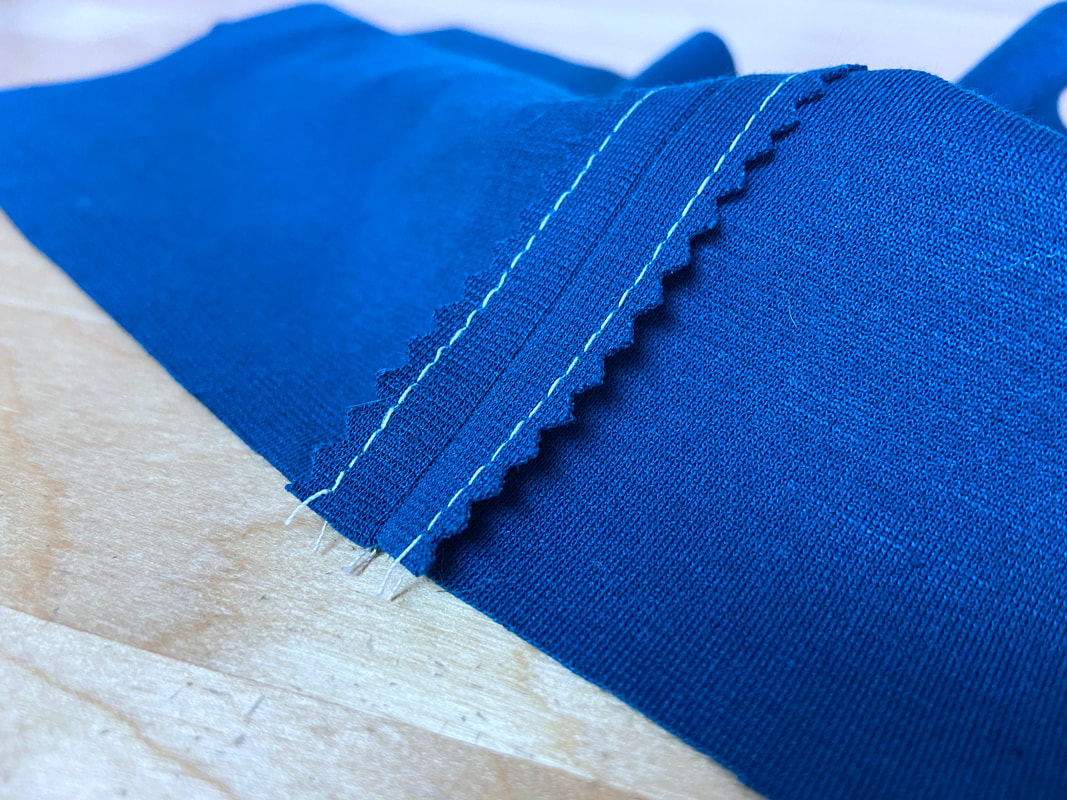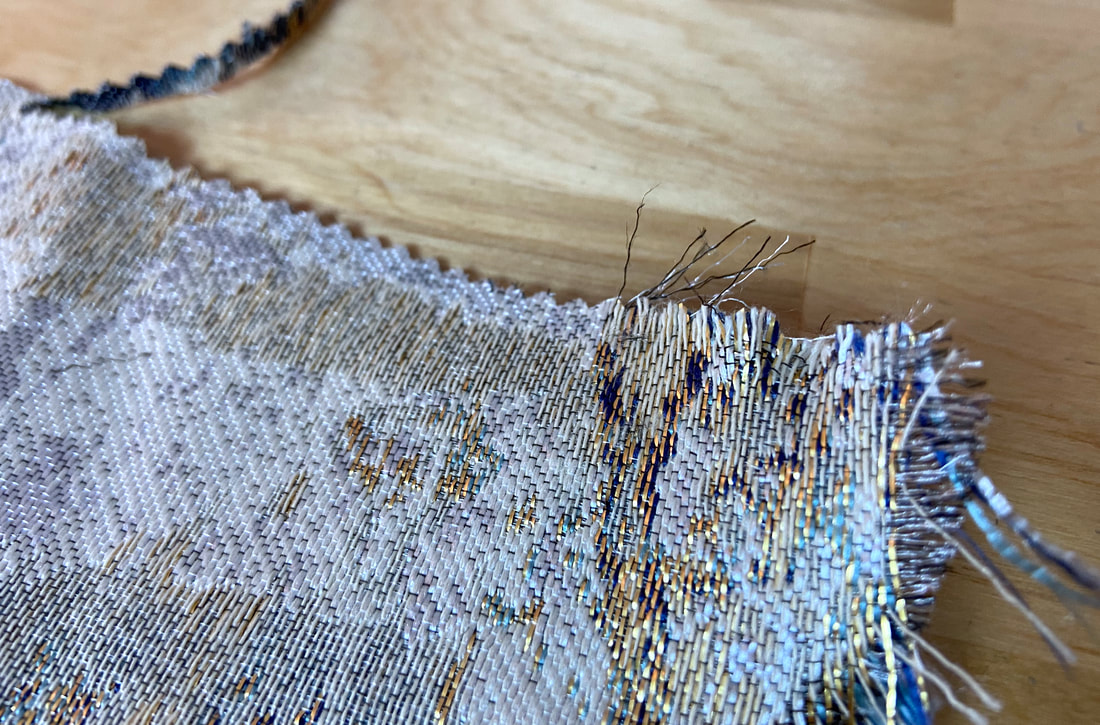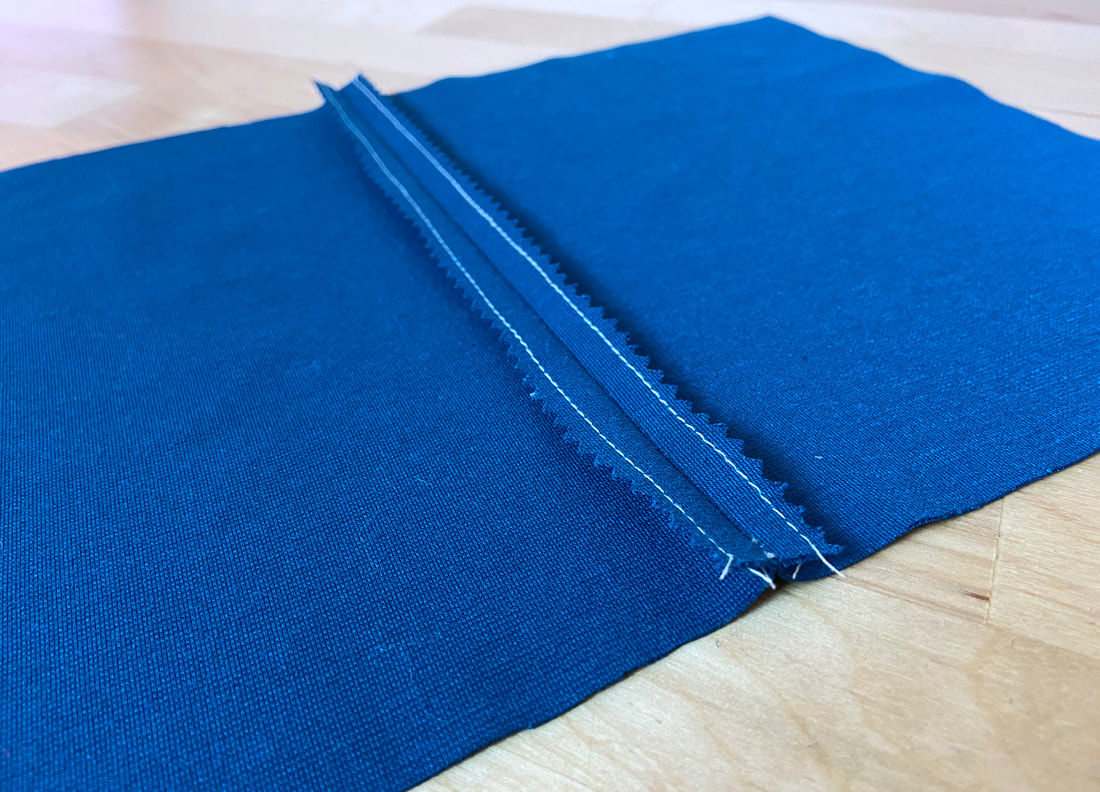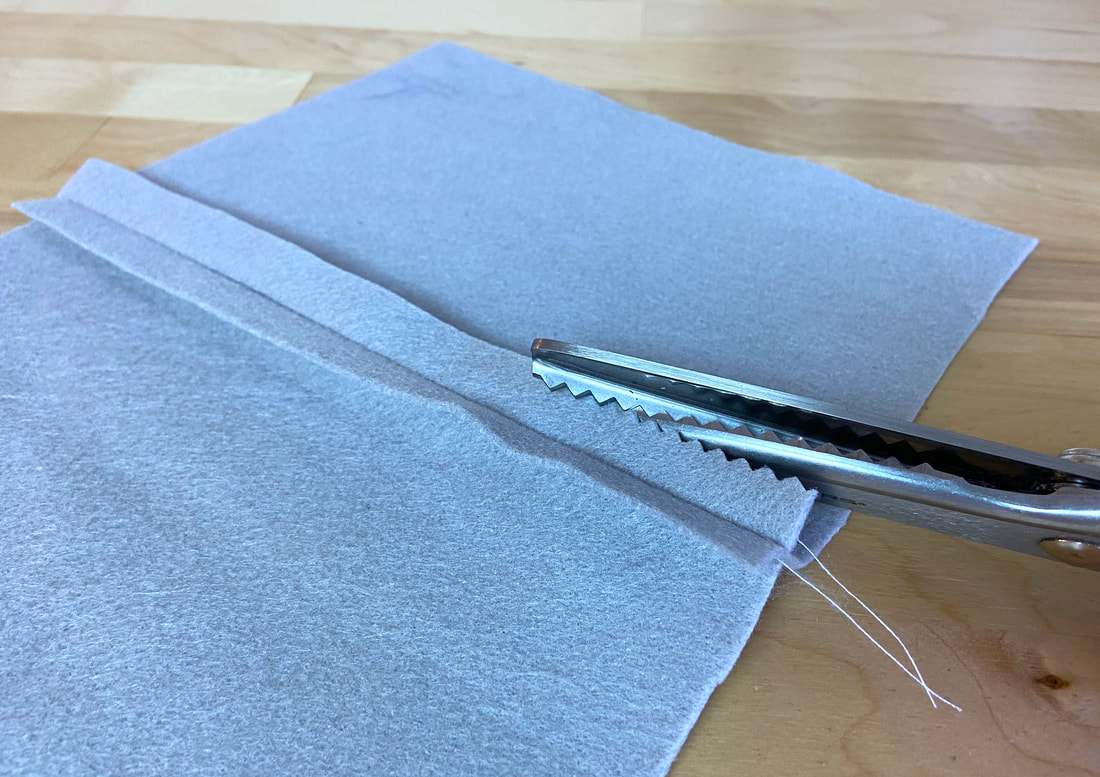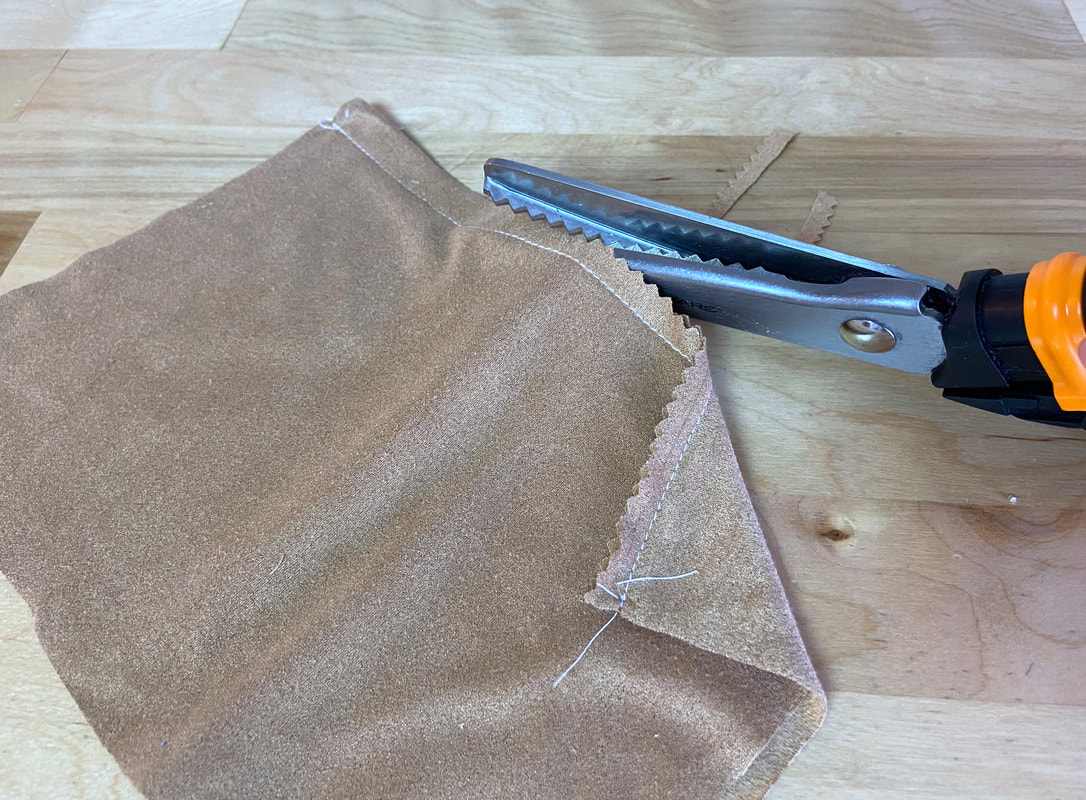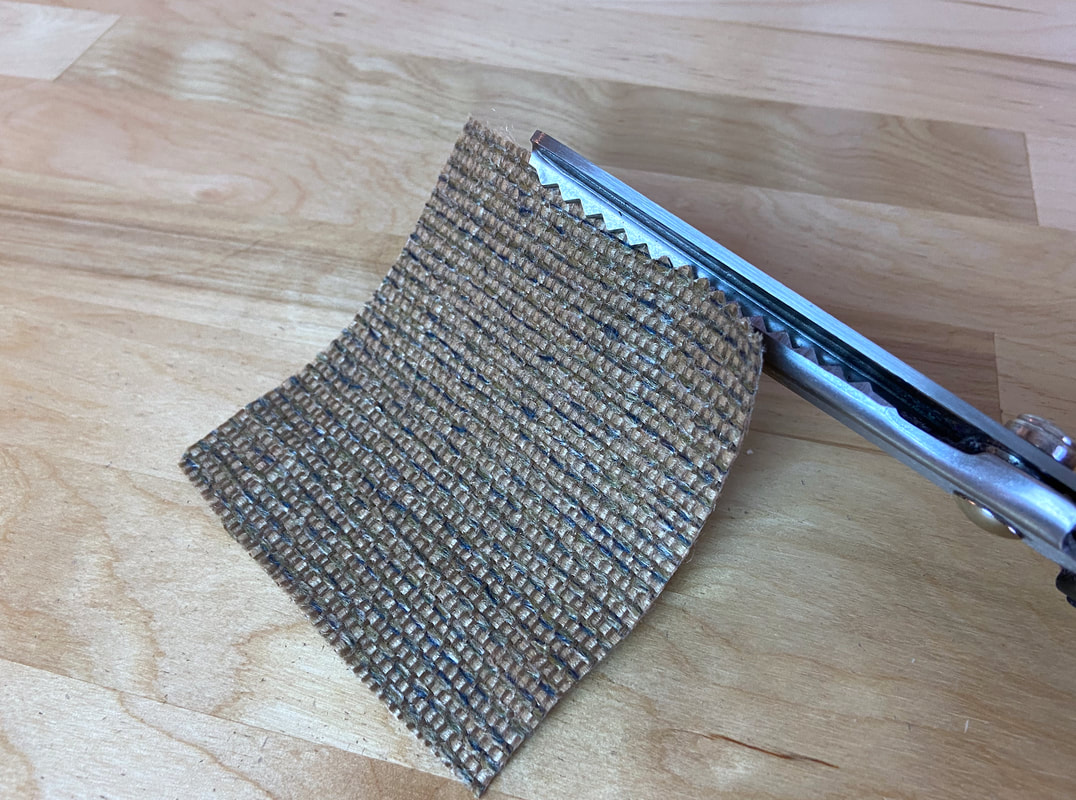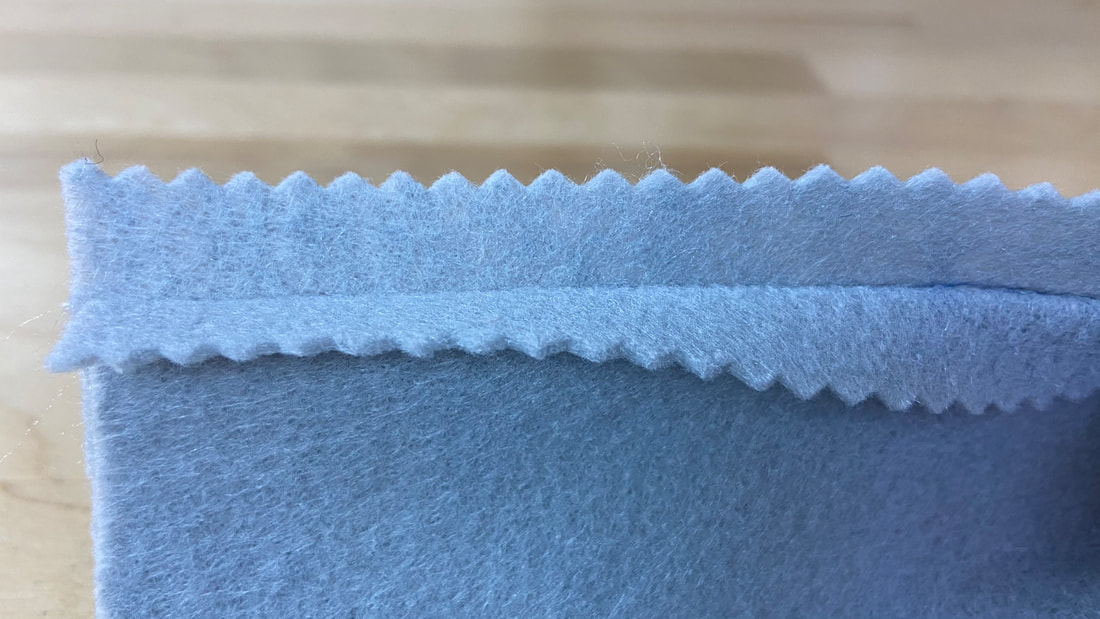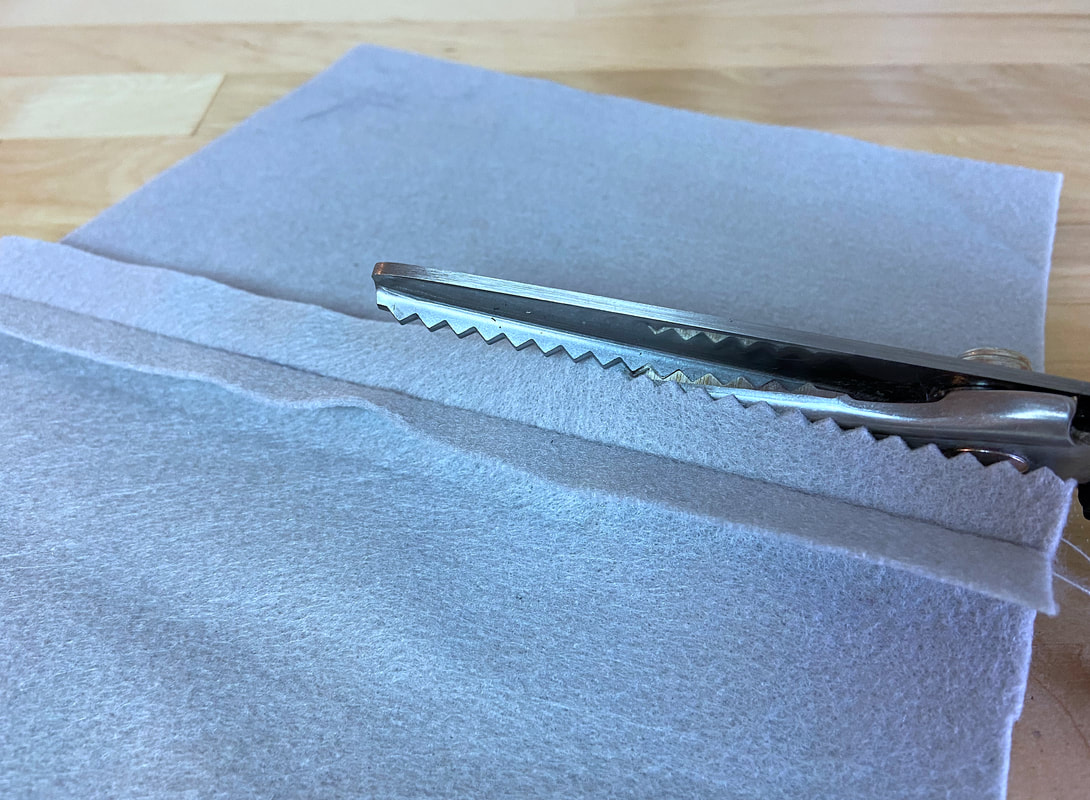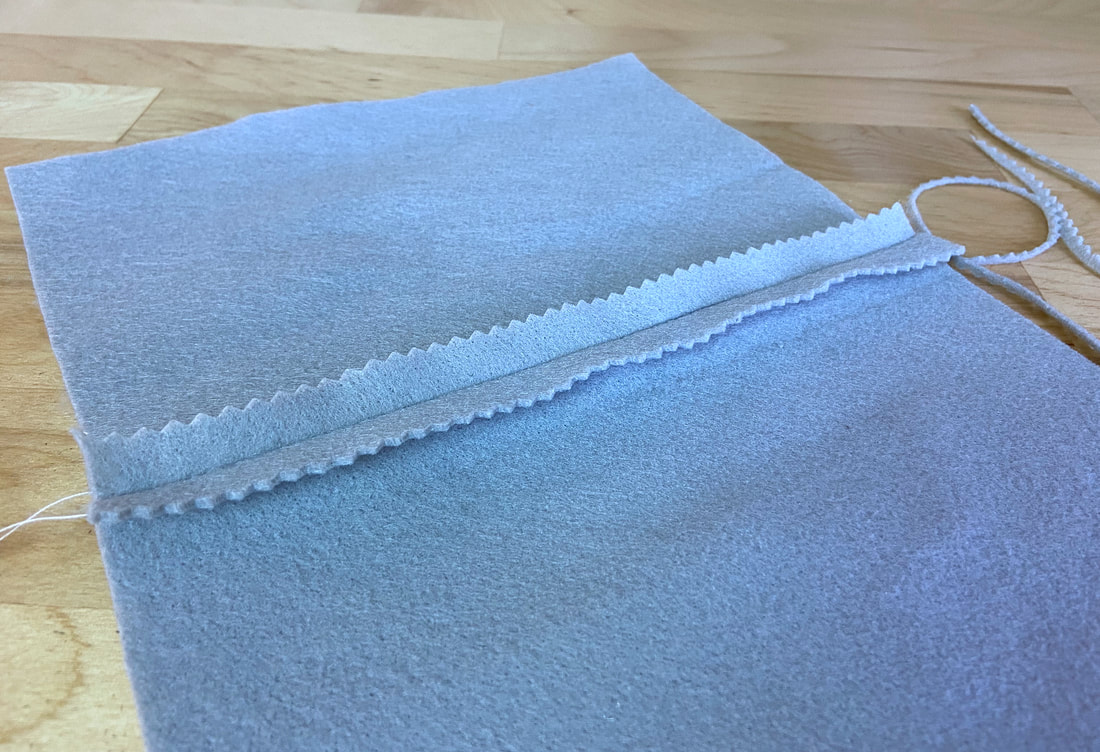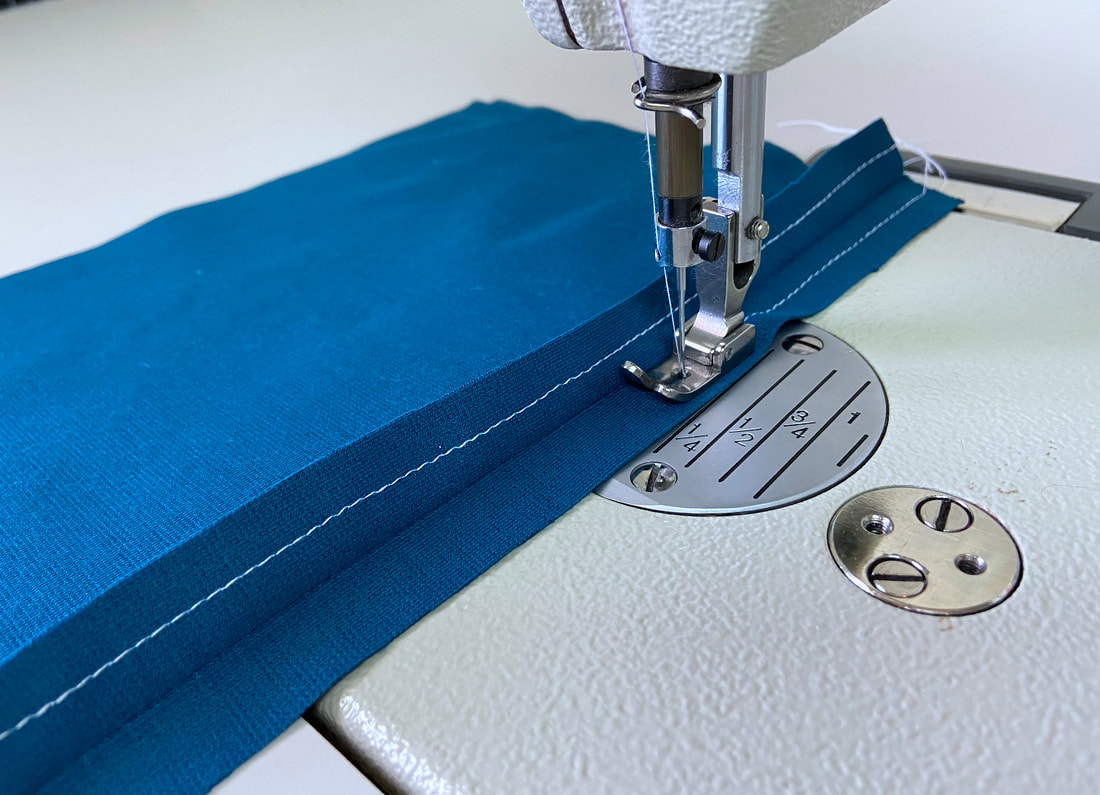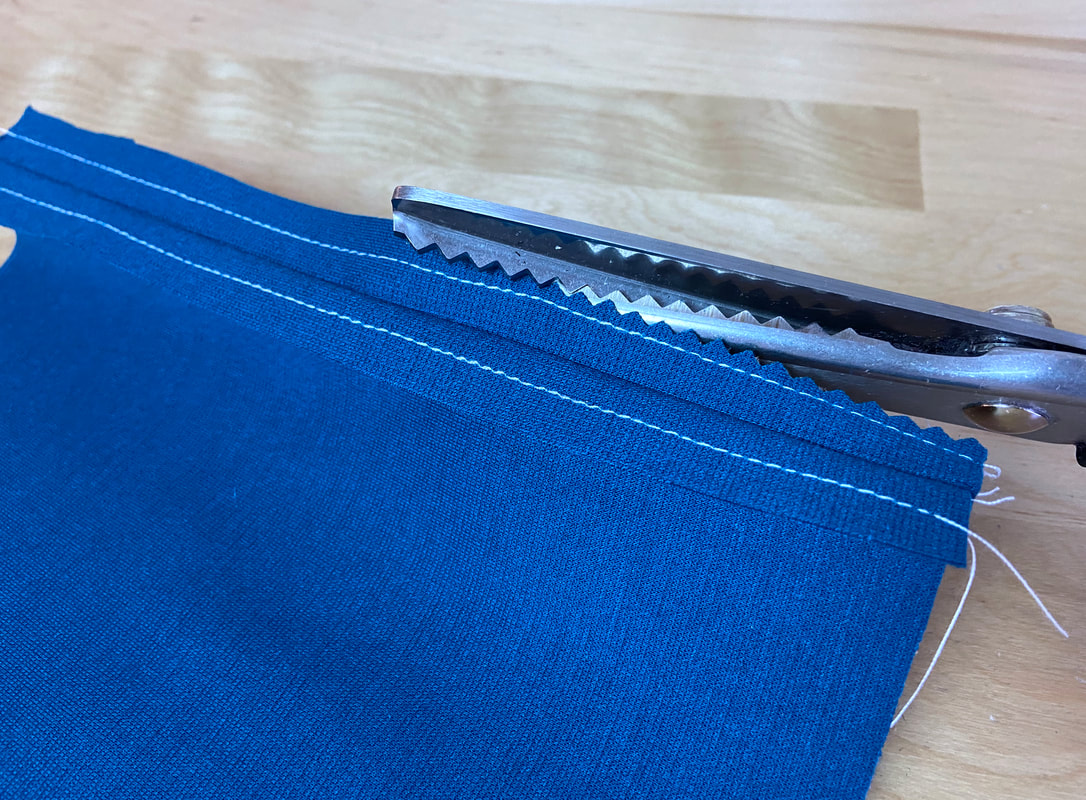The pinking method is the perhaps the fastest, simplest seam edge finish. This technique requires the use of pinking scissors.
Pinking scissors, or pinking shears, have triangle-like ridges which leave a zigzag cut on the fabric. This zigzag pattern is indented along the seam allowance to leave an aesthetically pleasing edge, while also somewhat blocking the threads form unraveling.
While super fast and convenient, pinking is not the most affective technique to prevent fabric fraying. As a matter of fact, it is more often used aesthetically than it is functionally.
You should not use pinking alone as a finishing technique on high fraying edges as it will not only be ineffective at containing unraveling threads, the triangular ridges will not maintain their shape. The pinking technique should be used on fabrics that fray very little and garments that are mostly destined for single use.
If you plan on washing the finished garment in a regular machine cycle, pinking will likely not withstand this process and the edges will distort and unravel.
To maximize the effectiveness of a pinked cut, it helps to add a straight stitch next to the pinked edge. Doing so will not completely take care of the problem, but it will decrease the chances of the edge unraveling.
How To Pink Seam Allowance Edges
1. You may choose to pink the seam allowance edges either before or after they have been stitched into a seam.
To not distort the accurate width of the seam allowance, it is perhaps easier to first sew the seam, then pink the edges either together or individually.
If the seam allowance is very narrow, pinking the edges individually may be difficult. To save some time, you can pink fabric edges together only if the fabric is crisp/structured and your pinking shears are sharp. As always, test the cut on a fabric scrap first.
Always work with a good pair of pinking shears and test a scrap of your fabric first to see if the two are compatible. Some fabrics, like those that are highly textured, loosely-woven and uneven, cannot be pinked.
2. Run the cuts along the fabric edge such that the end result is a sharp, defined zigzag pattern. You may have to cut deeper into the seam allowance in order to achieve a more even pattern.
It is recommended that instead of slashing from the bottom to the tip of the blade in one continuous stroke, you add multiple strokes using the middle portion of the blade.
3. Although not always possible, try to start each stroke where you left the last one such that the ridged edge forms one continuous pattern.
4. Always keep the pinking evenly positioned from the seamline such that the seam allowance maintains the same width throughout.
Applying The Stitch-and-Pink Method
To add a layer of stability and prevent unwanted stretching, it is a good idea to add a straight stitch within the seam allowance prior to pinking the edge. Although it does not completely prevent it, the addition of a straight stitch minimizes fraying along the pinked edges.
1. Machine stitch at about ¼” away from seam allowance edge as shown.
Depending on how narrow your seam allowance is, you may need to go a little past halfway into the seam allowance width.
2. Cut along the raw fabric edges with pinking shears being careful not to accidentally slit through the straight stitching.
Keep in mind that even with the addition of the straight stitch, pinking will not completely prevent fraying. For that reason, it should be used more for aesthetic purposes rather than a fully functional seam finishing technique.

